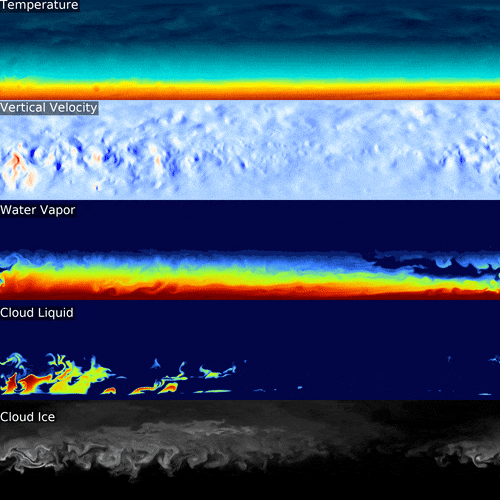Home | Publications | Codes
 Matthew R. Norman
Matthew R. Norman
Computational Climate Scientist
Advanced Computing for Life Sciences and Engineering
Oak Ridge Leadership Computing Facility
Oak Ridge National Laboratory
PO Box 2008, MS6016
Oak Ridge, TN 37831-6016
865.576.1757
normanmr@ornl.gov
Education
| Ph.D, Atmospheric Science | North Carolina State University | 2010 |
|---|---|---|
| M.S, Atmospheric Science | North Carolina State University | 2008 |
| B.S., Meteorology | North Carolina State University | 2006 |
| B.S., Computer Science | North Carolina State University | 2006 |
Bio
Norman is a computational climate scientist in the Scientific Computing Group at Oak Ridge National Laboratory (ORNL). He received his Ph.D. at North Carolina State University in Atmospheric Science under the U.S. Department of Energy’s Computational Science Graduate Fellowship (CSGF), and his adviser was Fredrich Semazzi. During his graduate studies, Norman spent eight months at the National Center for Atmospheric Research (NCAR) as an Advanced Study Program graduate visitor under Ramachandran Nair in the Institude for Mathematics Appliced to Geosciences (IMAGe). He also spent a summer at the NCAR Summer Internships in Parallel Computational Science (SIParCS). Directly after obtaining his Ph.D, he was hired as staff in the Oak Ridge Leadership Computing Facility (OLCF) to work on numerical algorithms and GPU programming for numerical climate models.
In the OLCF, Norman serves as a liaison for weather and climate model developers using OLCF resources. He has worked extensively with the Energy Exascale Earth System Model (E3SM) as a liaison for E3SM’s awards under the INCITE program and through funding from the DOE Exascale Computing Project. In his collaboration with E3SM, he has refactored the tracer transport code to use GPUs on the Titan supercomputer and has refactored the Cloud Resolving Model (CRM) code in the E3SM-Multi-scale Modeling Framework (MMF) code to use GPUs on the Summit supercomputer. Aside from refactoring codes to use GPUs, Norman has also performed research in developing new numerical algorithms for the Navier-Stokes equations underlying atmospheric and oceanic flow to simultaneously improve accuracy, robustness, and hardware utilization on modern, accelerated computing architectures. He also has collaborations with the Air Force through the OLCF and advises on GPU refactoring efforts in radiation, cloud modeling, and shallow-water flood modeling.
Selected Publications
- Norman, Matthew R., Ramachandran D. Nair, and Fredrick HM Semazzi. “A low communication and large time step explicit finite-volume solver for non-hydrostatic atmospheric dynamics.” Journal of Computational Physics 230.4 (2011): 1567-1584.
- Norman, Matthew R., and H. Finkel. “Multi-moment ADER-Taylor methods for systems of conservation laws with source terms in one dimension.” Journal of Computational Physics 231.20 (2012): 6622-6642.
- Ullrich, Paul A., and Matthew R. Norman. “The flux‐form semi‐Lagrangian spectral element (FF‐SLSE) method for tracer transport.” Quarterly Journal of the Royal Meteorological Society 140.680 (2014): 1069-1085.
- Norman, Matthew R. “A WENO-limited, ADER-DT, finite-volume scheme for efficient, robust, and communication-avoiding multi-dimensional transport.” Journal of Computational Physics 274 (2014): 1-18.
- Norman, Matthew R., Azamat Mametjanov, and Mark Taylor. “Exascale Programming Approaches for Accelerated Climate Modeling for Energy.” Exascale Scientific Applications. Chapman and Hall/CRC, 2017. 187-206.
- Norman, Matthew R., and Ramachandran D. Nair. “A Positive‐Definite, WENO‐Limited, High‐Order Finite Volume Solver for 2‐D Transport on the Cubed Sphere Using an ADER Time Discretization.” Journal of Advances in Modeling Earth Systems 10.7 (2018): 1587-1612.

The above image is from an idealized supercell simulation using the miniWeatherML code.